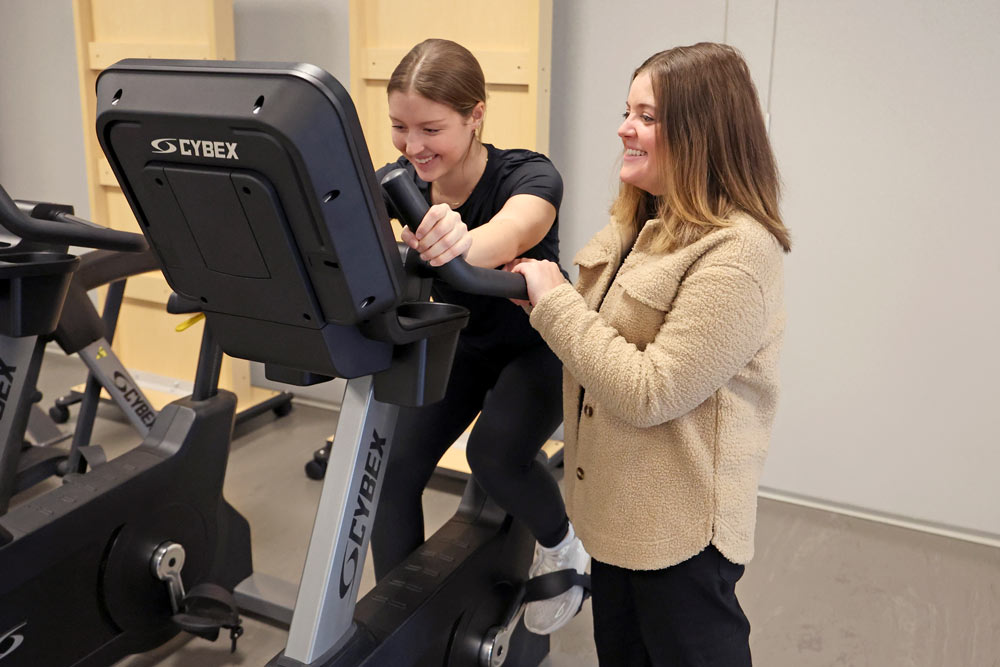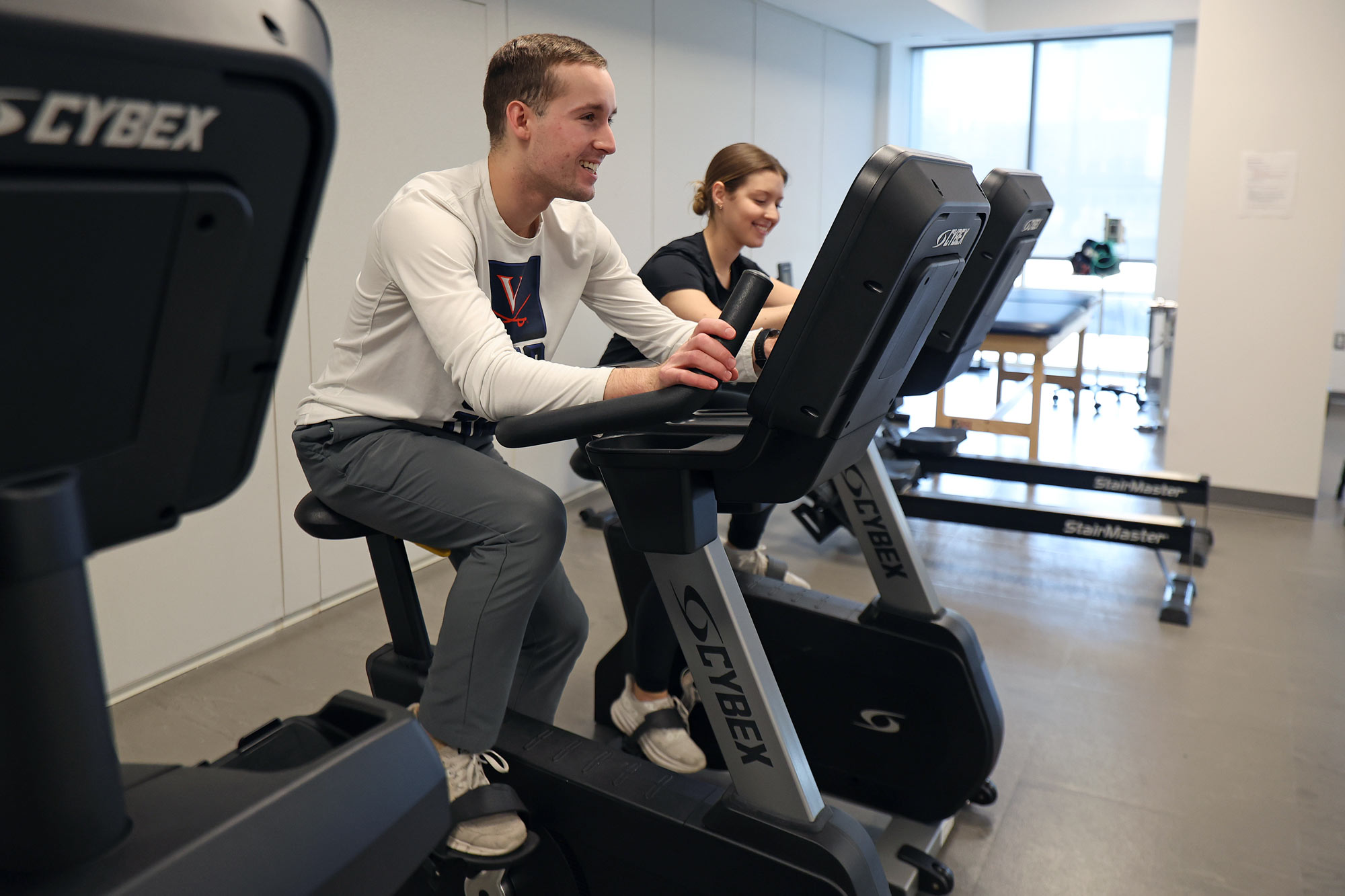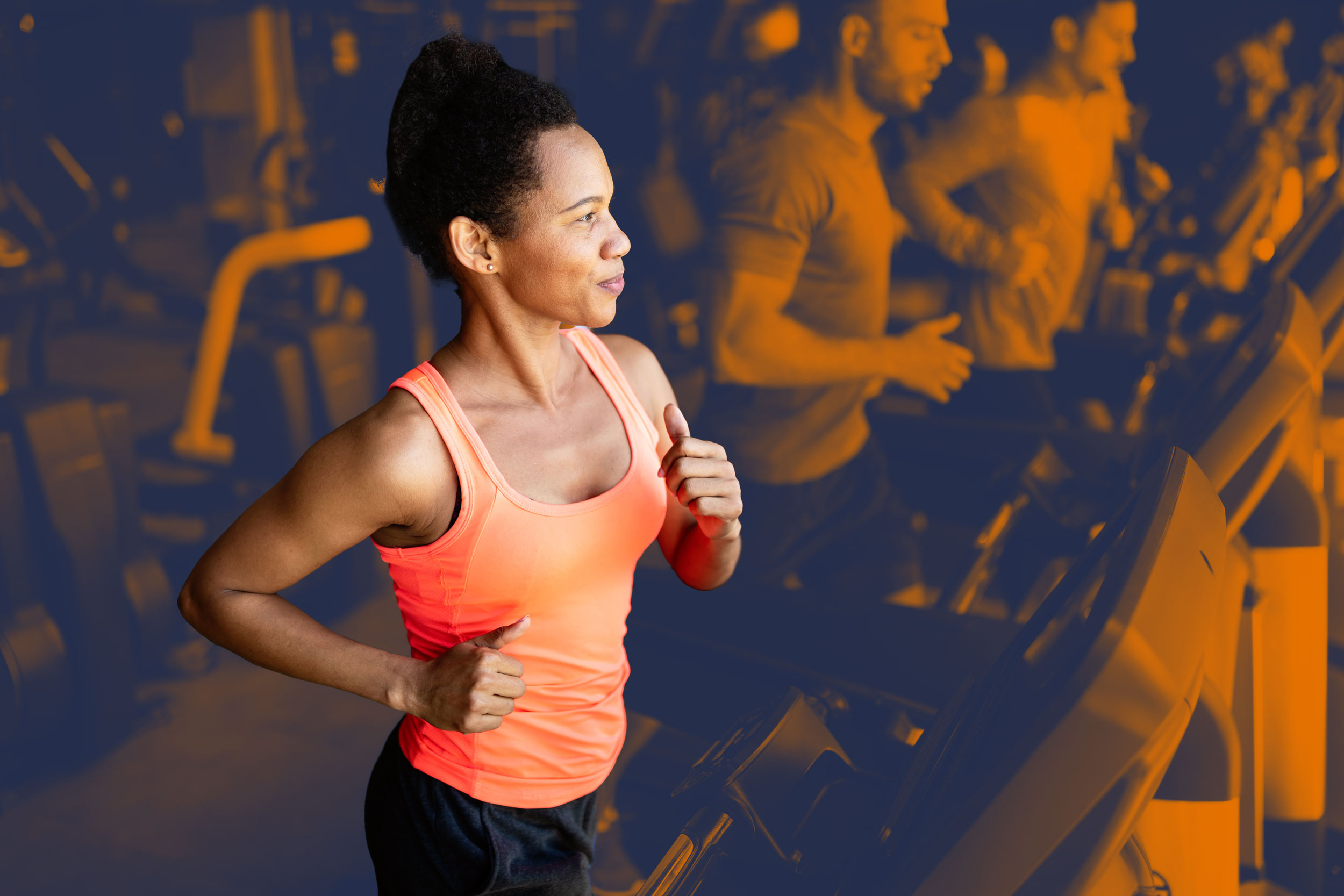If you’re feeling extra hungry after a month of holiday eating, University of Virginia researchers suggest taking your hunger to the gym and kicking up your workout a notch.
A Department of Kinesiology study led by Kara Anderson, now a postdoctoral fellow in the UVA School of Medicine, shows increasing the intensity of a workout suppresses hunger.
“A lot of people think, ‘The harder I exercise, the more hungrier I’m going to feel,’ but that’s not necessarily so,” Anderson said. “If you listen to your body, take a second to check in with yourself, you might find it otherwise.”
Anderson’s research team of Tana Mardian, Benjamin Stephenson, Emily Grammer, Macy E. Stahl, Nathan R. Weeldreyer, Zhenqi Liu, Kaitlin M Love, Sibylle Kranz, Jason D. Allen and Arthur Weltman found moderate exercise had little impact on the desire to eat. However, higher-intensity workouts curbed hunger.
The researchers found more intense workouts suppress several forms of ghrelin, a hormone that has a variety of impacts on the human body, including sleep, memory and ringing the bodily equivalent of a dinner bell.
The study involved eight males and six females riding stationary bicycles and exercising at both moderate and high intensities.
“They had a mask attached to them that gave us details about their levels of oxygen and carbon dioxide, so we were able to calculate their effort. We also looked at wattage generated by pedaling,” Anderson said.
Women were likely to feel less hungry after a more intense workout than their male counterparts.

Lead researcher Kara Anderson monitors colleague Macy Stahl’s progress on an exercise bike at the Department of Kinesiology gymnasium. (Photo by Matt Riley, University Communications)
“What we found was that high-intensity exercise significantly decreased levels of ghrelin compared to moderate or no exercise, and that was in all forms of ghrelin,” team member Grammer said. “Females started with a higher level of ghrelin but had a larger magnitude of decrease after high-intensity exercise when compared to males.”
Even arriving at the gym after fasting, the participants found themselves not hungry.
“After the high-intensity exercise, the participants would say, ‘This is going to sound weird, but I’m not hungry, and I don’t know why,’” Anderson said.
If the words “high intensity” strike fear into your heart, don’t worry.
“A lot of people are scared of high-intensity exercise,” Anderson said. “Obviously, you want to clear it with your doctor, but it’s safe because it’s individualized. If you’re walking and you walk faster so that you breathe harder or have a hard time talking, that’s high intensity. People know when they’re exercising at a higher level.”
For those who are less fit, the distance between moderate and intense workouts is not too wide.

Research team members Benjamin Stephenson and Macy Stahl race on the exercise bikes, adding intensity to their workouts. (Photo by Matt Riley, University Communications)
Trained individuals will take a longer time to reach what the researchers considered a high-intensity workout because they have more endurance.
“For others, it’s a lot easier to reach. It’s different for everyone,” Anderson said. “Exercise should be individualized based on your goals. What I need out of an exercise or training may not be the same as you or friends.”
Further study of the intersection of exercise with ghrelin could lead to exercise prescriptions as weight loss intervention, the researchers hope. That will take more investigation. Grammer is set to study the effects of high-intensity workouts and ghrelin on other populations, including those who are insulin resistant and obese.










